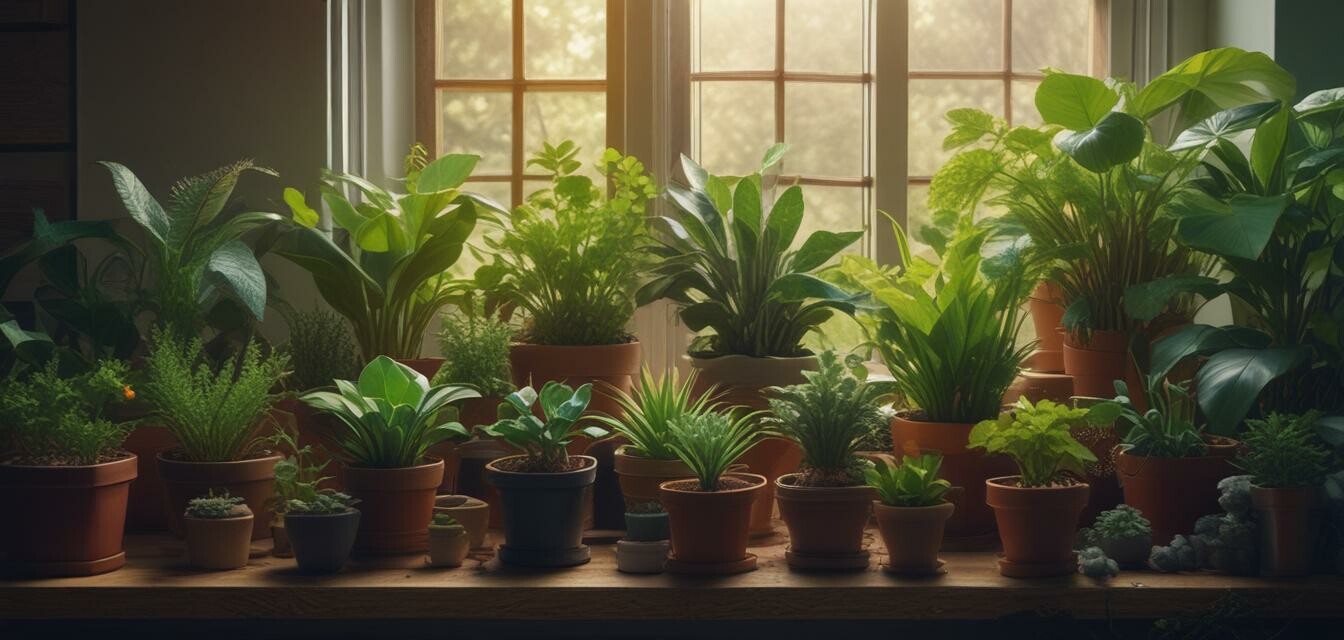
Understanding Your Plant's Growth Rate
Key Takeaways
- Every houseplant grows at its own rate depending on species and care.
- Understanding growth patterns enables better care and expectations.
- Light, water, and nutrients significantly impact growth rates.
- Monitoring growth can help identify care issues early.
- Different types of houseplants have distinct growth requirements.
Do you ever wonder why your beloved houseplants grow at different rates? Understanding your plant's growth rate can help you provide the best care possible and manage your expectations. In this article, we will delve into the factors that affect growth rates and how they vary among different types of plants. Whether you're a seasoned plant owner or a beginner, this guide will equip you with the knowledge to nurture a thriving indoor garden.
Factors Influencing Plant Growth Rates
The growth rate of houseplants is influenced by several critical factors, including:
- Light: Adequate light is essential for photosynthesis, which fuels growth. Different plants require varied light levels (bright, indirect, low light).
- Water: Overwatering or underwatering can stunt growth. Finding a balance based on your plant’s needs is crucial.
- Nutrients: Houseplants require essential nutrients. Fertilizing according to the season can promote optimal growth.
- Temperature: Ideal temperature ranges differ by species. Too hot or too cold can slow growth significantly.
- Humidity: Some plants thrive in high humidity, while others may prefer drier conditions. Humidity can affect growth as well.
How to Measure Plant Growth
Measuring the growth rate of your houseplants can help you understand their development better. Here are a few methods:
- Height Measurement: Use a ruler to measure the height of your plant from the base to the tallest leaf once a month.
- Leaf Count: Count the number of leaves your plant has every month to see if it is producing new growth.
- New Growth Indicators: Look for new stems, branches, or roots. Document these changes regularly.
Average Growth Rates of Common Houseplants
Different types of houseplants exhibit various growth rates. The table below summarizes average growth rates for popular houseplants:
| Houseplant Type | Average Growth Rate | Optimal Care Requirement |
|---|---|---|
| Spider Plant | Moderate (1-2 feet per year) | Bright, indirect light; well-draining soil |
| Snake Plant | Slow (6-10 inches per year) | Low to bright light; minimal watering |
| Peace Lily | Moderate (2-3 feet per year) | Low light; consistent moisture |
| Pothos | Fast (up to 10 feet in ideal conditions) | Bright, indirect light; regular watering |
| Fiddle Leaf Fig | Moderate (1-3 feet per year) | Bright, indirect light; high humidity |
Common Myths About Houseplant Growth Rates
There are many misconceptions surrounding plant growth rates. Here are a few clarifications:
- Myth 1: All plants grow quickly in the right conditions. Fact: Each species has its growth limitations.
- Myth 2: You can make plants grow faster with more water. Fact: Overwatering can lead to root rot and stagnate growth.
- Myth 3: Any houseplant can thrive in low light. Fact: Some plants need specific light conditions to grow healthily.
Tools to Help Monitor Growth
Several tools can assist plant owners in monitoring and maintaining optimal growth:
- Plant Care Apps: Track water schedules, growth, and care history.
- Plant Growth Journal: Regularly log measurements and changes in your plants.
- Pest Control Tools: Keep an eye out for pests that may hinder growth.
Conclusion
Understanding your plant’s growth rate is essential for providing the right care and ensuring its overall health. It will help you set realistic expectations and monitor how well your plants are responding to their environment. Being aware of how different factors impact growth will turn you into a more informed and confident plant owner. If you're looking for more resources, check out our Care Tips section for more ways to help your plants flourish!
Pros
- Better understanding leads to improved plant care.
- Helps in identifying problems early.
- Encourages regular monitoring and engagement with plants.
Cons
- Time-consuming for busy individuals.
- Some may find care tips overwhelming.
- Varying results based on plant species.

